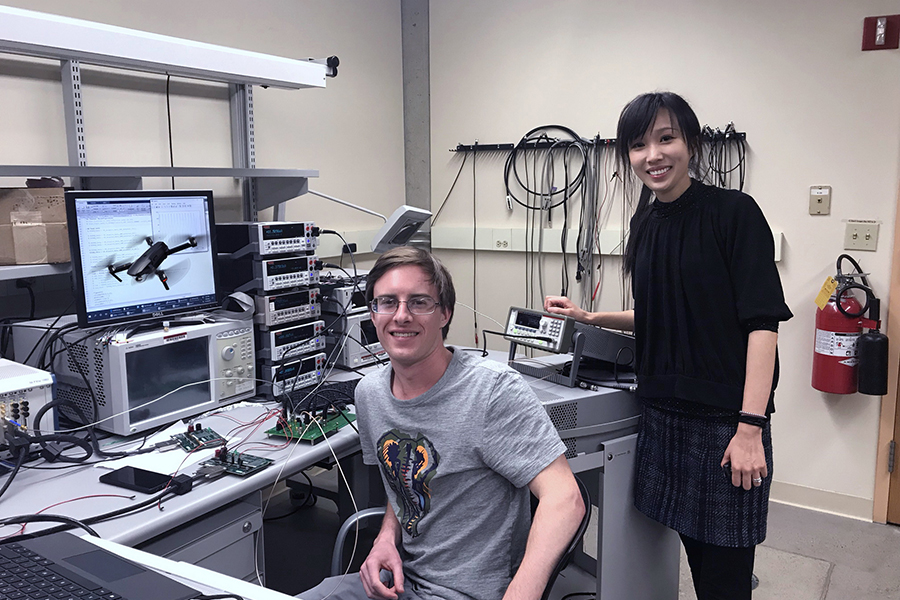
Secure and Energy-Efficient Communication
By Marika Yang
Media InquiriesDaily use of smartphones, laptops, and other Internet of Things devices requires strong, reliable, and safe wireless internet access. Because so many people need access to use a multitude of devices, often in the same space, there has been a great demand for secured spectrum sharing.
To help meet this demand, Vanessa Chen, assistant professor of electrical and computer engineering, has been awarded a National Science Foundation (NSF) grant as part of the SpecEES program to develop trusted wireless transceivers for secure and energy-efficient communication. Along with the real-time machine learning and encryption project supported by the NSF CAREER award, this new project is expected to deliver more secure spectrum access for continuous health and environmental monitoring.
Using massive multiple-input-multiple-output (MIMO) technologies alleviates demand and increases the efficiency of spectrum sharing for users, but requires significant power consumption. To achieve dynamic spectrum access, Chen and her Energy-Efficient Circuits and Systems (EECS) Lab are working to build lightweight and miniaturized versions of base stations. Today, base stations are large towers and consume a lot of power to broadcast and receive information. With “mini base stations” or “mini cells” that can be deployed as drones, underserved areas can access wireless internet.
In this project, Chen has two main goals: the first is to achieve low power consumption with a lightweight base station. The second goal is to enhance the wireless communication security of these systems.
“If we can enable security primitives and features in radio frequency (RF) and analog domain through the exploration of useful device characteristics and circuits architectures, we will be able to reduce the power and area significantly,” said Chen, who earned a Ph.D. in electrical and computer engineering from Carnegie Mellon in 2013, and returned to the College of Engineering as a faculty member in 2019.
Because everything is connected through the internet, it is vital to keep data protected and private. A base station can be jammed if someone sends a very high-powered signal, which is called a blocker. Chen is investigating new ways to suppress the interference of intentional jammers, such as recognizing each individual user immediately. This has proved to be quite challenging, because any new system or trusted receiver added to the base station consumes power.
“Every time we try to add any function to this device, it will drain more power,” said Chen. “We need creative ways to develop security measures that are low power and can be carried with a wireless device so that the malicious attacks can be directly tackled at the wireless front-end.”
As part of the NSF program, the research project will be integrated into education, specifically student coursework. For example, undergraduate course material would tackle secure sensors, while Ph.D. and masters courses would cover base station design, which is more advanced and requires students with a greater technical foundation. Chen has partnered Apple and Analog Devices for support in the education initiative.
